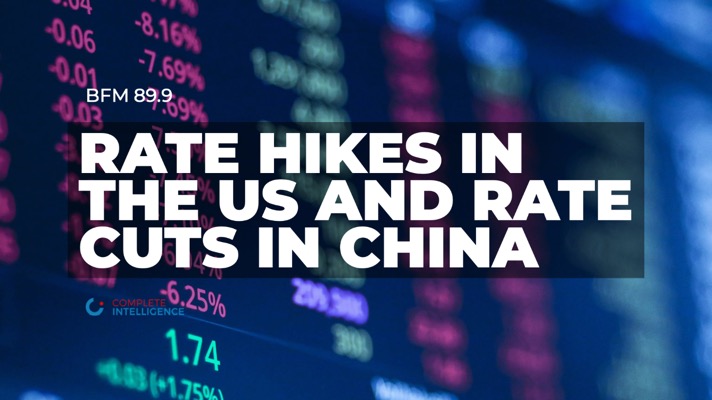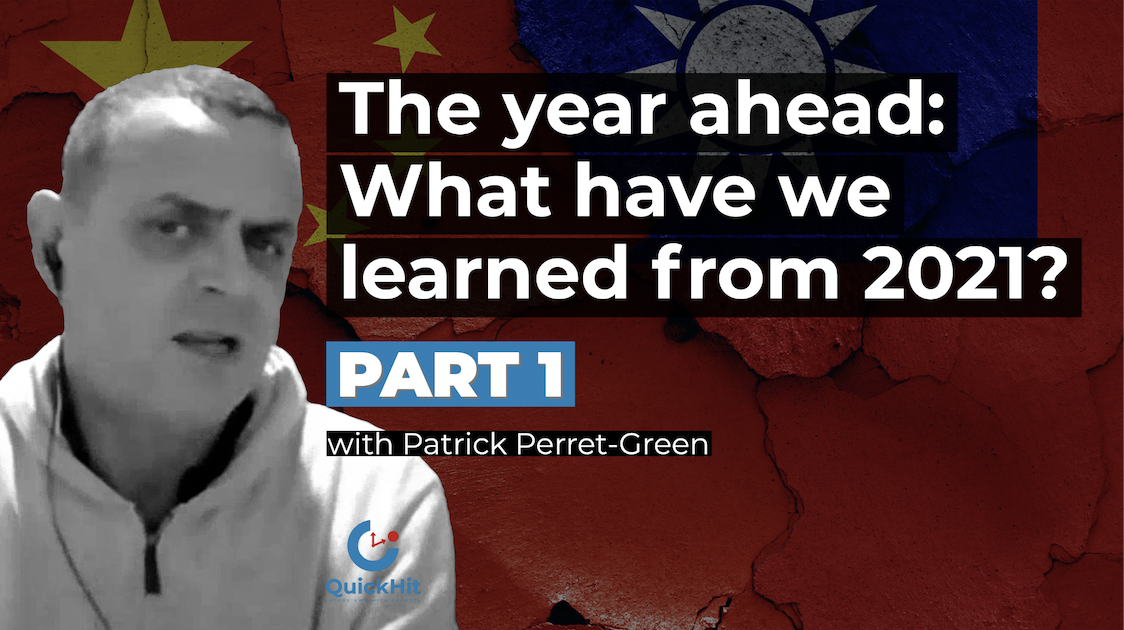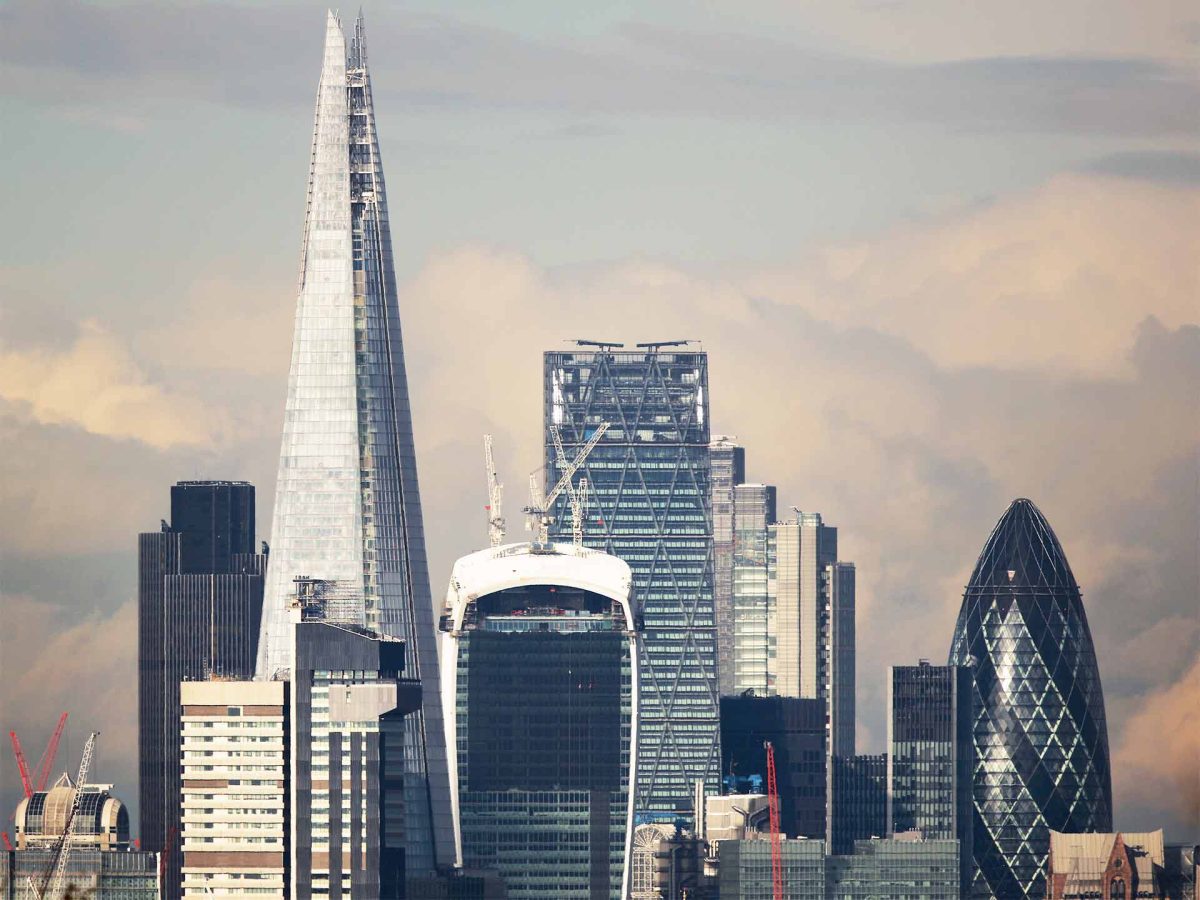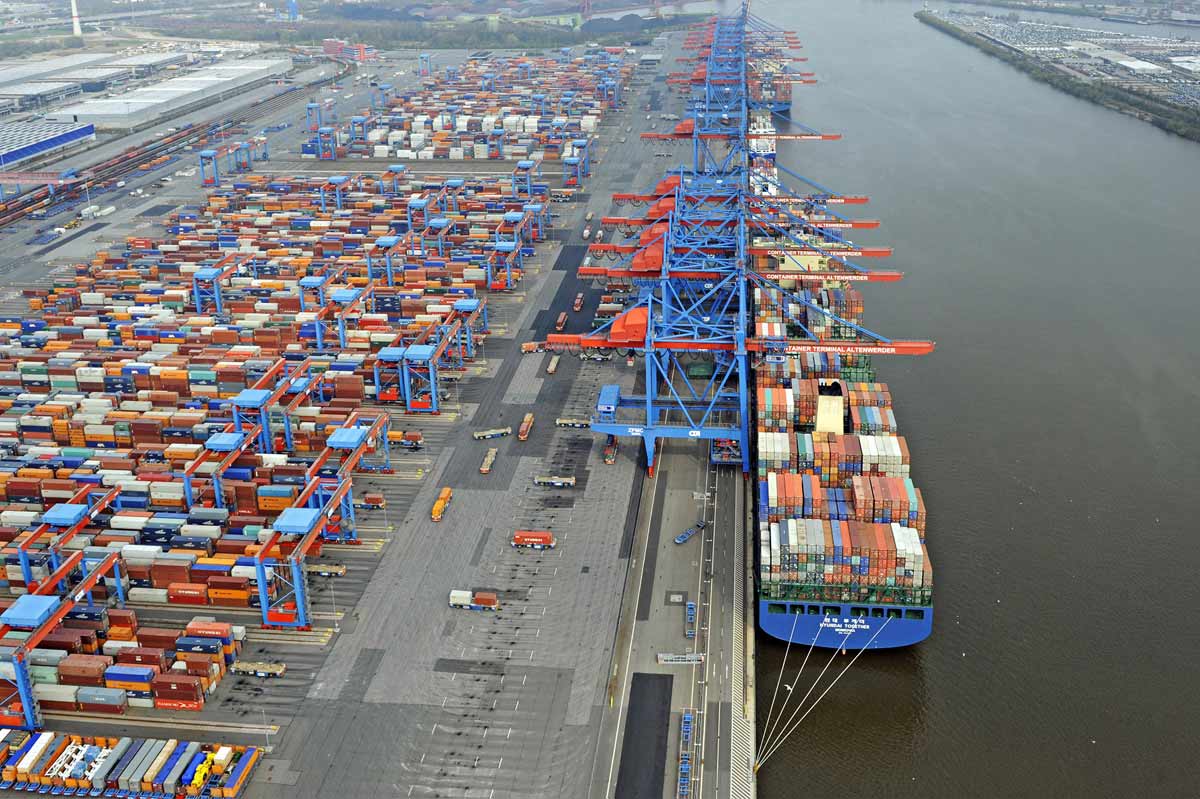We had a pretty volatile week last week, with crude selling off pretty sharply early in the week. In this episode, we looked at energy backwardation, and Tracy educated us on what’s happening in those markets.
We also had some comments from Putin about a multipolar world. Albert talked through that.
And then on Friday, unfortunately, we saw the assassination of Japan’s former Prime Minister Abe. We talked about the Japan post-Abe and what that means for the region.
Key themes:
- Energy backwardation
- Putin’s Multi-Polar world
- Japan post-Abe
- What’s ahead for next week?
This is the 25th episode of The Week Ahead, where experts talk about the week that just happened and what will most likely happen in the coming week.
Follow The Week Ahead experts on Twitter:
Tony: https://twitter.com/TonyNashNerd
Tracy: https://twitter.com/chigrl
Albert: https://twitter.com/amlivemon/
Time Stamps
0:00 Start
0:54 Key Themes for the week
1:28 Catalyst of the energy sell-off on Tuesday
5:44 Will we see more action in energy prices?
6:57 Is it cost-ineffective to make hydrogen with natgas prices?
8:11 Diesel
9:20 Vladimir Putin’s multipolar world.
13:44 Japan post-Abe
20:29 What’s for the week ahead?
Listen to the podcast version on Spotify here:
Transcript
TN: Hi. Welcome to the Week Ahead. I’m Tony Nash. Thanks for joining us. I’m with Tracy and Albert today. Sam is away, but we are talking about a pretty volatile week this week. Before we get started, actually, please like and subscribe. Please ask any questions below, make any comments. We want to make sure this is interesting for you, so just let us know any additional info you want or comments. We’re happy to address those.
We had a pretty volatile week this week with crude selling off pretty sharply early in the week. So we’re going to look at energy backwardation, and Tracy is going to educate us all on what’s happening in those markets. We also had some comments out of Putin about a multipolar world. We’re going to have Albert talk through that. And then on Friday, unfortunately, we saw the assassination of Japan’s former Prime Minister Abe. So we’re going to talk about the Japan post Abe and what that means for Japan and the region.
So first let’s get into energy. Tracy, obviously, we had a big sell off in energy early in the week, and then we saw it come back later. What was really the catalyst for that energy sell off on Tuesday?
TS: What happened is that we started on July 5, right? We opened with low liquidity in the market in general. Then we saw a sell off in the general markets and commodities and risky assets that kind of exacerbated that trade. And then on the 6th, we saw a liquidation of a couple of very large positions in that market. And so fundamentally, basically, there is no reason for this sell off other than technicalities.
In fact, if we’re looking at this market, this spreads, the calendar spreads, which means month to month, were exploding higher during this entire move. That implies that the physical market at least, is very tight right now because you’re seeing backwardation increase significantly when we’re seeing a $10 move in ZZ, which is crazy.
TN: Can you tell us what that means? A $10 move in ZZ. What does that mean for the rest of us?
TS: If you’re talking about calendar schedule, we’re talking about monthly. So we can talk about the current front month is August. So we look at August, September, September to October, October to November, et cetera, et cetera. And once these spreads start exploding higher, that means that we’re seeing people want to dump oil in the front month market because that’s more lucrative than keeping it in storage.
So if I’m an investor and I’m looking and I want to invest in a backwardated market, I’m looking at a convex market that goes from right to left, and I’m going to invest in, say, a back month, and I want my investment to move higher…
TN: I’m investing further in the future.
TS: Right. That’s what it backwards. If you’re in a contangable market, we’re looking at the opposite situation, where you’re looking at a convex structure going from right to left, whereas if I invest in December, by the time my investment reaches Frontline X free, I’m losing money. I’m losing value in my investment.
TN: Right.
TS: And so that’s how we kind of have to look at that situation.
TN: Yes. You had a great tweet this week explaining that with visuals.
TS: I did. It’s on Twitter, if anyone wants to see it.
TN: Exactly. We saw this in crude. We also saw it in a natural gas. Right?
TS: Yes. We’re kind of seeing a major pullback in many of the commodities markets. Right. We’re seeing a little bit of a bounce this week because we’re looking at China. China has recently announced we have one last announcement with $200 billion bond sale rate. So we’re looking at a lot of stimulus out of China that’s giving commodities the boost. Right now, we have to see I think the markets are still going to wait on, particularly the industrial and base medical markets are going to wait until we actually see some action in China to really see investment back into these markets after this huge goal.
TN: So nobody believes the China stimulus story right now. It’s kind of a show me the money period. Right. But once they do start to show the money, do you think we’ll see much more action in energy prices?
TS: I think you’ll see more action in metal prices than you will equity prices.
TN: Copper’s way off compared to, say, the last 18 months. But it’s not way off, given historical copper prices. If we go back before, say, Q1 of 2020, it’s kind of where it had been previously in the ballpark, at least. Right. So we haven’t necessarily reverted back to pre-COVID, necessarily. We’re just in the start-stop manufacturing world, and that’s what’s affecting base metals like copper. Is that fair to say?
TS: Oh, absolutely. If you look at, like, a monthly chart rather than looking at a five-minute chart, and the market has kind of just been consolidating, really, for the last two years, until we see a really big break above, say, $5, a really big break below $3, we’re still kind of in that consolidation zone.
TN: 3.50 to 4.50 kind of range. Interesting. Okay. Sorry, Albert.
AM: Yeah. I got a question for Tracy. Nat gas, as we’re talking, since we discussed it a little bit, that’s used to make hydrogen, if I’m not mistaken, and since the nat gas price seems to be elevated, isn’t that going to be a little bit too cost-ineffective to make hydrogen, which causes a diesel problem, if I’m not mistaken? I’m not sure about that. That’s what I’m asking.
TS: No, absolutely. I think that would be a problem. Looking forward. I think there’s a lot of problems if we’re looking at the hydrogen market. There’s still a lot of problems when we’re talking about taking this idea to actual fruition. Right. Because if you look at the hydrogen market, there’s like a rainbow of green hydrogen, blue hydrogen, this hydrogen, this hydrogen. But we really haven’t gotten to the point that can overtake, not gas the allure of the situation is that you can take hydrogen, mix it with nat gas, you can send it down the same pipeline, and that saves a lot of money.
AM: Yeah.
TS: The situation is this is not a great idea in theory, but we’re just not there yet.
TN: Okay, got you. Albert’s, question about diesel. Diesel is not any less tight than it was a week or two ago. Right? In fact, that’s just as tight or tighter than it was, say, a couple of weeks ago or a month ago.
TS: Yeah, I think the diesel market is still very tight.
TN: Right.
AM: Maintenance season starts, isn’t it? From September to November?
TS: Yes, we will start maintenance seasons.
TN: Okay.
TS: I would actually look for some of these refineries to maybe put off maintenance season. So that’s what I would watch to the maintenance season happen. And it’s happened before. If we have it such a tight market, we could see them putting off maintenance seasons. It’s not unheard of.
TN: Okay, so hurricane season and maintenance season are upon us, but we may see at least maintenance season for all of us.
TS: Oh, not I just moved to Florida.
TN: Good luck with that. I’m in Texas. We don’t get as many of you, but it’ll be a fun season for you.
Okay, let’s move on, guys, to some comments out of Putin this week. Vladimir Putin had some comments about us, the multipolar world becoming more and more of reality. We heard this ten years ago. We heard this 20 years ago, and it came up again this week. So, Albert, can you kind of let us know what’s going on there?
AM: Tony, I’ve used this multipolar example for the US. Dollar dominance I got for years now. And the fact of the matter is, we are not in a multipolar world. We are not even going into multipolar world.
People are confusing a little bit of weakness in the US. Leadership and errors and decision making, foreign policy for multipolars, it’s just a multipolarity, and it’s just not the case for the world to be in a multipolar scenario, you would need multiple countries with equal militaries and economies. We are nowhere near that.
The Russian economy is 2.5 trillion. The American economy is pushing 30 trillion. This is just a joke by Vladimir Putin. Simply undermine the US dominance both in the world stage and the dollar.
TN: Aside from some dumpster pundits who write for The Atlantic or whatever, who believes that nonsense?
AM: A lot of Europhiles that want to see the United States take a step down, they can do it. A lot of crypto guys, a lot of gold guys. These guys have to make that argument, because without multipolarity, you cannot have a neutral reserve asset to settle trade. And that’s just the fact of the matter.
The problem becomes, if you have a multipolar world, you’re on the verge of another world war, because there always has to be one alpha that takes hold of the system. You just can’t have equal people.
TN: And the cost of the transaction? Cost? The cost of trade, everything goes up. If you have multiple rights go up, everything goes up.
AM: It’s completely unstable.
TS: Inflation from other countries to other countries.
AM: Yeah.
TN: The world is built on China exporting deflation. Has been for 15, 20 years. And it will continue. If they could just keep their ports open, it will continue. And it makes people happy. Right.
AM: No, you’re right. That’s just the way our system works right now, with the dollar underpinning all of it. It’s the lifeblood that makes trade work. And people are not going to like it. But I promise you, no one alive today is going to see anything other.
TN: So let me just take a step back. Who does he think the polls are? Russia, China and the US? Or Germany or something?
AM: He’s trying to make an assumption to say that Russia and China are the new contenders to the United States. The problem with that is they don’t have military power projection globally like the United States does. They can’t even invade Ukraine. China can’t even invade Taiwan. Otherwise they would have taken it if they’ve it could have. This is the world we live.
TN: Yeah. Russia can stir up problems in Libya or the Middle East or whatever.
AM: There’s no question that they can stir up problems and they can fill in gap vacuums that we leave right, unintentionally, unintentionally. But they cannot hold that territory. They cannot force changes in governments like the United States did.
TN: And every time I hear somebody talk about the Belt and Road as a sign of China’s dominance, it reminds me of Napoleon’s march to Russia. Right? I mean, they’re spreading themselves so thin. They can’t keep that up.
AM: They can’t. That’s perfect example to do that, to make that thing actually successful, you need to back that up to secure your trade line, trade with the military. Right. China has like, what, two military bases outside of China? Like one in Djibouti and something else. I mean, they can’t send ships over to their armor.
TN: Myanmar.
AM: Yeah. This is beyond a joke to me. I don’t take anybody seriously that even brings this part up, right. Vladimir Putin included.
TN: That’s good. So anybody watching this, if you have an alternative view, let us know in the comments. Honestly, we’d love to hear it. We just want to hear some credible.
TS: Put your notes in the comments.
TN: Yes, absolutely. Okay. Now, finally today I woke up in the US to the really tragic news of Japan’s foreign Prime Minister Abe, being assassinated.
I saw Abe in his first stint as PM in the mid 2000s. And then when he came back in, in 2013, and with the Abenomics plan, which was really difficult to pull off, ultimately successfully. The guy was smart. He was all about Japan. He’s all about Japan recovering, all about Japan being competitive. I put a picture up of Abe shaking hands with Prime Minister Modi of India. Japan and India were very tight. A lot of Japanese investment going to India, a lot of partnership across those two countries and in Africa, both to defend against China in Asia and other parts of the world. So Prime Minister Abe will be missed.
I think what Abe did partly was bring back Japan’s ability to defend itself by passing a constitutional change that allowed the Japanese military to defend itself where previously it wasn’t even allowed to do that. So there’s a lot of dignity that Japan kind of got back, and we can rub Japan’s nose in World War II for eternity, but it’s not going to be constructive. What happened, happened. They’ve paid their dues, and that’s kind of what Abe said, look, we paid our dues, we’re going to move on now and join the 21st century. And that’s what Japan did.
So I’m just curious to get your thoughts, guys, on Japan post Abe. What do you see as of course they moved on to another prime minister. Japan has already moved on from the Abe government. He wasn’t a sitting prime minister. But what do you see kind of the challenges of Japan’s role in Asia particularly, but also in the world post Abe?
AM: I think the most pressing issue for Japan would be contending with China, both militarily and economically. Abe was, like you said, brilliant statesman and patriot for the Japanese people. So he’s going to be sorely missed. And it’s not just he’s going to be missed, but his cabinet and the people that his network is going to be missed because they’re losing a big part of what he brought to the table in terms of strategy and ideology. It was a big shift.
I think that the Japanese are probably going to struggle for strategy in the next five to ten years. And it’s a sad thing, but I’m sure the Japanese, they’re resilient people and they’ll move on and they’ll recover.
TN: Tracy?
TS: No, I absolutely agree with what Albert said. I think the thing is that people are painting him, the media right now, in particular the Western media, painting them with some villain, which is very interesting to me. And I think that people should really just look at his legacy and respect what he’s done instead of jumping on the bandwagon.
TN: So they’re portraying him as some ultra nationalist, but he’s as ultra nationalist as Modi as in India, or Jokowi is in Indonesia, or Lee is in Singapore, you name it. Tsai Ing-wen in Taiwan. It’s an Asian direction now. Right. And has been for the last ten to 15 years.
AM: Yeah. The media also, Tony, is desperate to not allow any center right or even right nationalist figures be murderers or looked up upon. They just can’t stomach it. They just can’t help themselves to demonize a person that is absolutely unjustifiably demonized by being called an ultra-nationalist and even worse, by the NPR.
NPR had two other headlines that they had to delete because it was just so atrocious. This is a.. And Modi, Abe, I don’t want to put Victor Orban into that, but all these right leaning leaders just get attacked and the media can’t help it.
TN: Right, yeah. I think from an economic plan, if we look at what Abe did with Abenomics, of course, the Japanese Central Bank is kind of “independent,” right. But they really took the JPY from kind of 76 to the dollar to, say, 120 to the dollar, and it really allowed Japanese manufacturing to be competitive again. Right.
And it took somebody with that clarity of economic vision, as well as the clarity of, say, the military vision and political vision, to be able to pull off what they did. And in terms of, say, energy sustainability under Abe, they also created much deeper relationships in the Middle East with places like Qatar, UAE.
TS: And they also looked forward to nuclear, where you looked at the west was looking to shut things down, Abe was looking to invest in nuclear projects. You’re looking for energy security, energy going forward. There are a lot of things that he did to advance that sector in Japan, which is admirable.
TN: Right. Albert if we take a US perspective on this? The US has worked hard to kind of hold a line against China. Do you think with the mediocre leadership we have in the US right now, do you think it’s possible that some of that US say coalition falls apart a little bit? Or do you think we just kind of take a breather and then it resumes based on the institutional stamina of parts of the Japanese government?
AM: That’s a great question, Tony. That’s actually a really good question. And I think where we have to look for we have to separate the Biden foreign policy cabinet with the Pentagon. Because the Pentagon is actually leading this charge for the Pacific with Japan and Australia in charge. I really don’t think that the Japanese are going to take a step back or the US is going to take a step back. I think the system is pretty much, the train has already left the station and it’s rolling.
There might be an argument from the opposition in Japan, but I don’t think. That it’s going to take hold to derail this new initiative by the US and the Pacific.
TN: Great, that’s good to hear. Okay, guys. Hey, on that somber note, we’ll end it, but let’s look at the week ahead. Guys, what are you looking for in the week ahead? We’ve had this real turnaround this week. What do you see going into next week? Do you see things calming a bit?
We saw it coming into Friday. Things really turn up in US markets and in commodity markets. Do we see things stabilizing a bit going into the Fed meeting after we’ve had some Fed comments late this week?
AM: I want to see the comments of where they might signal a 50 basis point rate hike versus a 75. I absolutely believe 75 points is coming just from the jobs data that they posted. It was obviously massaged a little bit.
TN: Just a little bit.
AM: Of course it is. Yeah, but this was a good one. And then the revision too, and it just seems to me that they want another 75 basis point rate hike.
TN: To really kill it?
AM: They got to tackle inflation. I mean, they’re looking at 8.8 on the next CPI, which is just.. And you’re staring on the barrel at 9% and 9.2 and 9.3 in the coming months, which is absolutely a political nuclear bomb that goes off.
TN: Okay, Tracy, what are you looking for in the next week especially in commodities?
TS: Yeah, I mean, I agree we probably will see 75 after non farm payroll this week, which I was looking for a clue kind of are we going to get 50, are we going to get 75? It looks like 75 for sure.
So looking in the coming weeks, I’m really looking to China right now and to see what comes to fruition with these sort of stimulus plans. What does that do to the base in industrial medals markets? And I think those are the two things that you should be focusing on right now, particularly if you’re invested in commodities markets.
TN: Very good. Okay. Yeah. I’m kind of hoping they give in to 50, but I’m not hopeful. I do think they’ll on the kind of conservative hawkish side and go 75. But if they can pick up the bat phone and talk to China, and the China guys will unload a dump truck of cash over the next week or so, then I think they’ll be a little bit lighter and do 50 basis points. But I think a lot of it depends on China ECB. They can’t get their act together, so there’s nothing ECB can do to really help.
And Europe is in so much trouble that it doesn’t really matter what they do. They have huge problems anyway. So. I think you’re right. And tell me what you think about this. But I don’t necessarily think we see massive chop. I think we see just a lot of fairly sideways moved for the next week or so.
AM: I would be wary if we jumped up to 4000 or even, like, 3970. I think a rug pull would be in an order right after that. That’s what they do. They bowl everybody up and then pull the rug out.
TN: Tracy?
TS: Yeah. After this big move down in the oil market, in particular, because we did have sort of a flow event coupled with a couple of large funds kind of workforce to liquidate. So I could see that we still could go a little bit higher next week. Sideways to higher next week.
TN: Very good. Okay, guys, be interesting to see. Thanks for joining us. Thanks very much. Have a great weekend. And have a great week ahead.
TN: Very good. Thank you, guys.
AM: I struggle with the headache through that whole thing.









